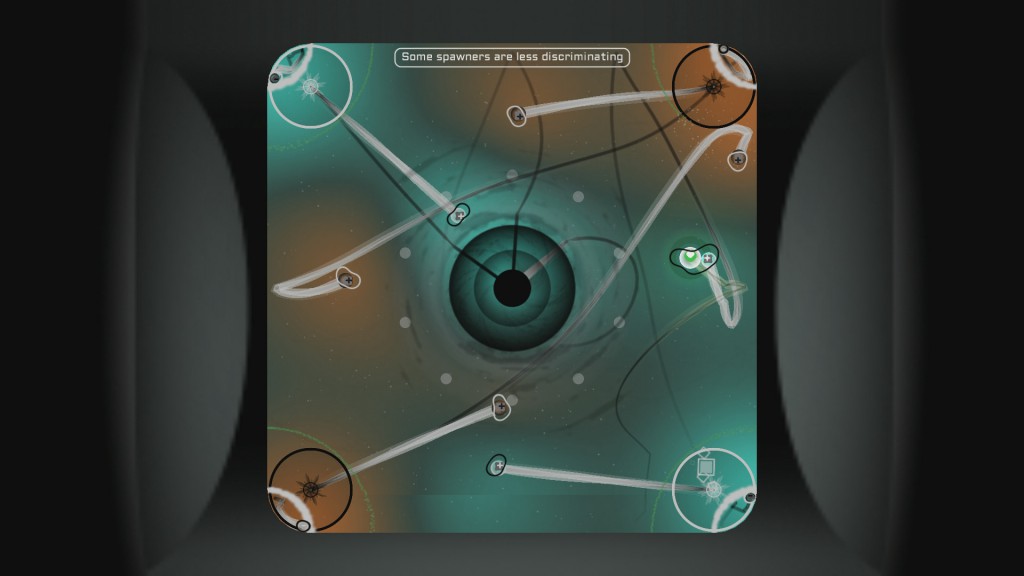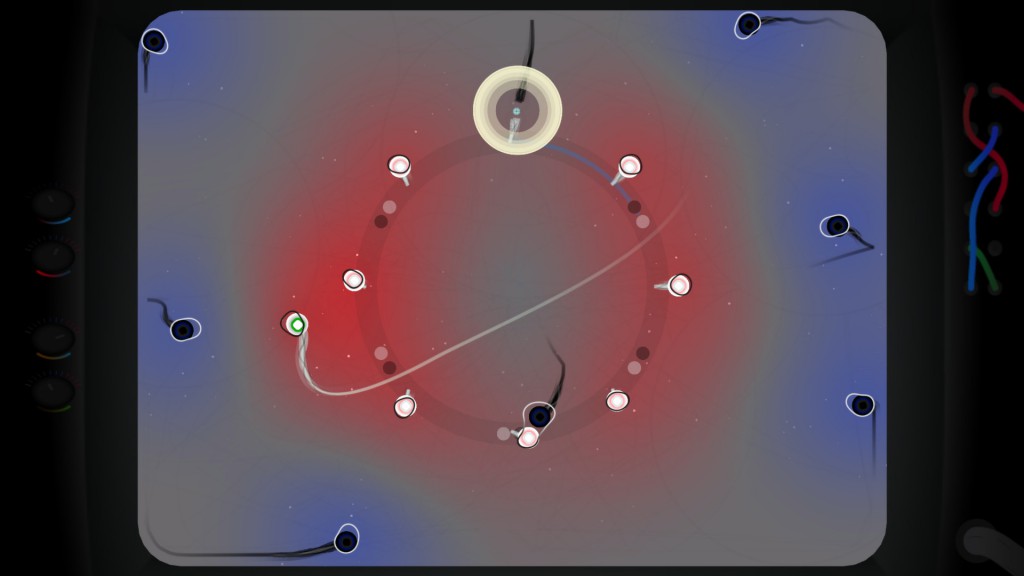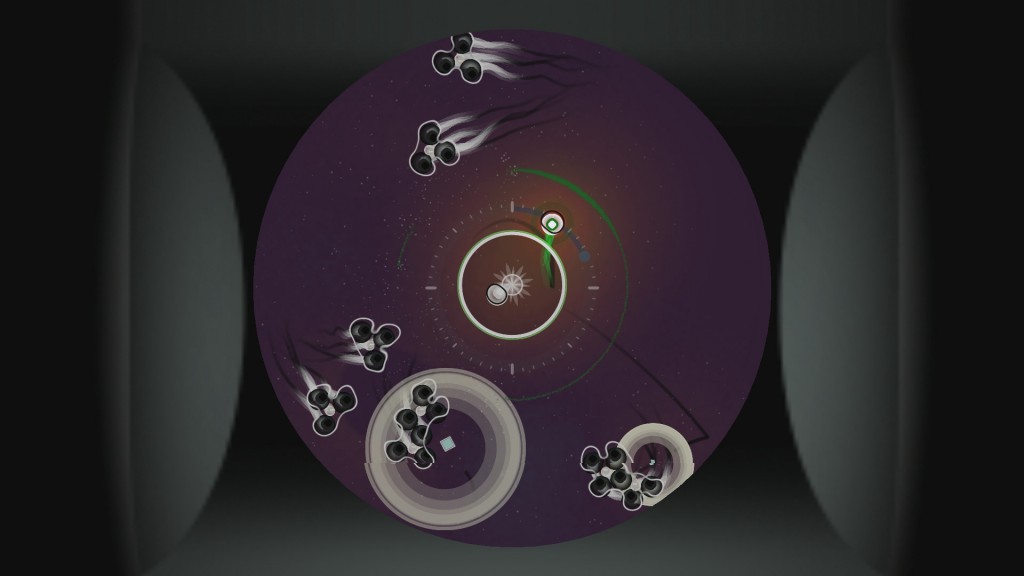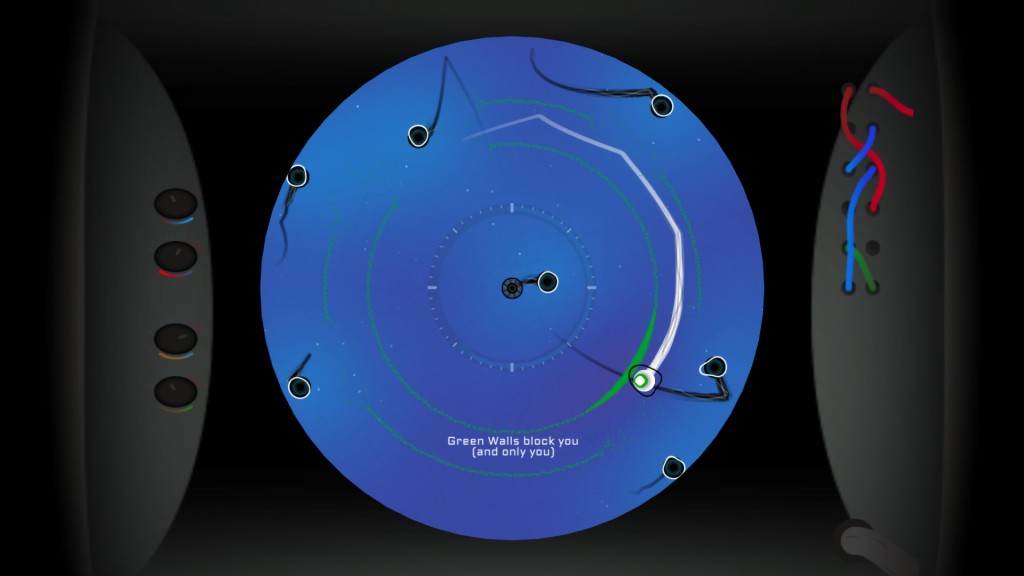
Particulars – Review
Ever since CBS’ The Big Bang Theory entered our lives, the field of physics has established a small, yet noticeably firm position in our daily consciousness. Not that everyone now fully understands the many difficult theories and laws that govern our universe, but at the very least, more people now understand the significance of learning about subatomic particles. Of course, a television show can only do so much. Therefore, the Sydney-based SeeThrough Studios, with support by the Australian government, has developed Particulars, a videogame that focuses on the subatomic world, enabling players to not only study, but even control the smallest of particles.
Story
Although the game itself is made up of a large series of physics puzzles and challenges, the real hook of this endeavour is the story progression. Starting with a short cutscene, which shows a series of eerie drawings with next to no real explanation, it reveals that Particulars’s protagonist is a young physicist called Alison.
As an introduction to each puzzle, she reveals one memory from her past through a citation. Together, Alison and the player journey through her troubled past, trying to cope with the experiences that have shaped her persona. Science is the only thing she truly understands and trusts, and thanks to a simulator of subatomic particles, she is able to continuously engage in her research. Of course, that is where you come in.
By constantly feeding the players small scraps of information through Alison’s citations, the game succeeds in hooking them to the screen for much longer periods of time than is normally expected of a puzzle game. While players continuously form a bigger picture in their minds, each new revelation forces them to adapt both their thoughts on and their expectations of Alison’s past. Moreover, the small sporadic cutscenes only thicken the smokescreen, enticing players to keep on playing until their brain hurts from all the science in between.
Graphics
Visually, Particulars is split into two different categories. Whereas the aforementioned cutscenes are in fact a series of still, oftentimes vague images that gently flow into one another, the actual game looks nothing like that. There, any hint of emotion is left out in favour of a strictly scientific look. The particles are shown as circles, each containing their own magnetic field that actively reacts to the proximity of other particles.
The backgrounds within the “simulation” contain traces of previous particle movements, which is a nice touch in an otherwise almost sterile environment. This not only fits Alison’s love for science, but also the gameplay itself, as the challenges often require a large amount of concentration from the players. Any unnecessary frills might have killed the serene atmosphere, so SeeThrough Studios definitely made a wise choice in this regard.
Sound
Don’t expect this game to blow you away with its spectacular orchestral soundtrack. Instead, any and all sounds within Particulars are subtle, only protruding from the background when important events demand them to.
In terms of sound, Alison’s voice is the only companion in this micro-universe. Luckily, she does not sound like a 90’s robot and she actually does sound like a girl you would want to meet… You know, psychological issues and traumas aside.
Gameplay
However interesting the story telling may be, any game can be torn asunder if the gameplay is below par. Anyone with even the slightest interest in subatomic particles, or physics in general, will agree that this is not the case with Particulars.
In each level, the player controls a single negative quark, which probably symbolises Alison’s negative experiences. Quickly, the game explains that every particle has an anti-particle that can erase it from existence. This mechanic is constantly reiterated upon as you are encouraged to create neutrons, protons, electrons and larger constructions in order to destroy – or save, depending on the challenge – the many particles that crowd the screen.
All of this is done by flying around yourself, being careful not to be destroyed yourself. Because of your negative charge, you attract positive particles and repel negative ones. After a while, other effects, such as weak force and gravity, come into play to shake things up. While all of this might not look very sexy on paper, rest assured that this deceptively simple premise is a recipe for puzzle addiction.
Once players really get into the game and Particulars forces you to create large structures and even chance your own nature, it all gets very complicated and the learning curve skyrockets into oblivion. To help the players, the game comes with its own digital encyclopaedia, which explains every particle and physics law you encounter in the game. Science enthusiasts can therefore use this as a learning experience, and we might even consider this game educational enough to be used in science classes in the final years of secondary school.
Conclusion
Both as an educational experience and as a puzzle game in general, Particulars should not be overlooked by those who are interested in the laws of physics. Although the difficulty curve does deliver a sucker punch in the sixth chapter, it is well worth suffering through this spike to learn everything there is to know about Alison. The story and the enthralling puzzle gameplay are combined into a formula that can be extremely hard to refuse after its first taste. It even inspired the following poem:
As she wanders
through the psyche
of a lost girl, lingering
in her past self…
Ah, screw it. Back to the game!











No Comments